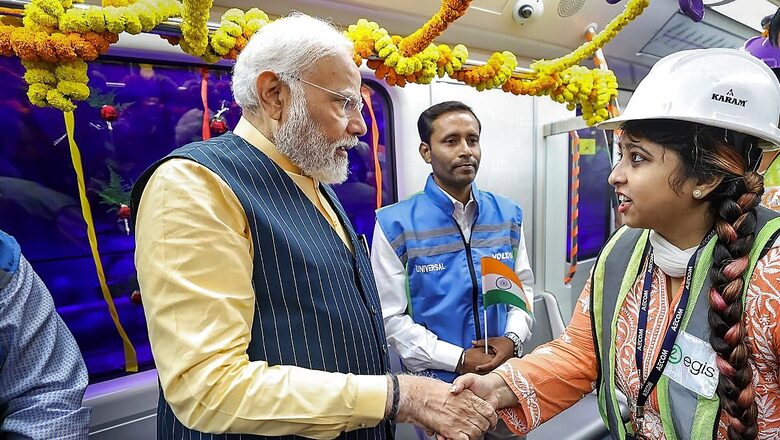India’s First Underwater Metro Now Operational in Kolkata; How Bengal Achieved This Feat | Explained

views
Kolkata had its name written in golden letters whenever there was talk of a rapid transit system in India. The city got the first metro in 1984, and now, in 2024, it will again be the first to have an underwater Metro.
Prime Minister Narendra Modi on Wednesday inaugurated metro services in Kolkata that included a 4.8-km underground section from Howrah Maidan to Esplanade. The underwater tunnel is part of this line connecting two century old cities.
This is not just the first underwater metro but the route is also home to the country’s deepest metro station — Howrah — situated 33 metres below the surface. The metro covers the 520 metres stretch under the river Hooghly in just 45 seconds.
The starting of this East-West Metro will help decongest road traffic and provide seamless, easy and comfortable connectivity.
The project is estimated to have cost Rs 10,442 crore, and is being executed by the Kolkata Metro Rail Corporation.
The underwater stretch is 16.55 km-long, of which, 9.3 km route from Salt Lake Sector V to Sealdah is already operational.
How the Project was Executed?
With the commissioning of this line, India gets its first transportation tunnel under any river. According to the official details, the tunnel across the river has been built in a record 66 days. It is located 350 m downstream of Rabindra Setu or Howrah Bridge.
This tunnel under the river is around 30 metres below the water level. The train will be travelling at a speed of 80 kmph in the underwater section.
As per the officials, there were many challenges before them to execute the project. But technology was a saviour. The twin subaqueous tunnels were burrowed through predominantly stiff clayey silt. Under the river, the length of this tunnel is 520 metres.
The twin tunnel system was executed by Earth Pressure Balancing Tunnel Boring Machines. It was launched from the Howrah Maidan and was retrieved at Esplanade after completing the work in a single drive of 3.65 km.
The metro line uses the communication based train control system. There is also an automatic train protection system.
“If there is a signal danger, the driver/train operator cannot move the train, or pass the signal in danger. The train can only move at the advisory speed. If this speed is exceeded, then automatic brakes will be engaged. As far as possible the scope of human error is minimised,” an official told News18, demanding anonymity.
Evacuation pathways in both the tunnels with egress arrangements at Howrah station and Strand Road have been made, keeping in mind any emergency.
Water Cannot Enter Tunnels
Even though the metro route is underwater, it is designed in a way that not a drop of water can enter it.
Hydrophilic gaskets have been installed in between the concrete of the tunnels. “If water enters the tunnels, the gaskets will open up,” the official explained.
They also said primary peripheral grouting has been done around the tunnel and neoprene tape and hydrophilic gaskets are used in the segment joints.
The non-transparent tunnels and circular bored tunnels of internal diameters of 5.55 metres having 275 mm thick RCC segmental permanent liners have been installed. There is no way commuters will be able to see the water. For giving a feel of underwater, special illumination of the inner walls of the tunnels with blue lights has been done. Also, illuminated fishes will be swimming around during this journey. As many as 40 illuminated fishes have been installed in the tunnel.
Bengal Leads the Way
Decades ago, social reformer and freedom fighter Gopal Krishna Gokhale had said, “What Bengal thinks today, India will think tomorrow.” This was true in a lot of ways, including the metro. While so far there were no transport tunnel in the country, the staring of this metro may serve as a template for several Indian cities that are situated next to a river.
India’s first Bullet train will also have an undersea stretch in Maharashtra but West Bengal takes away the tag of having country’s maiden underwater transport tunnel.












Comments
0 comment